Key points
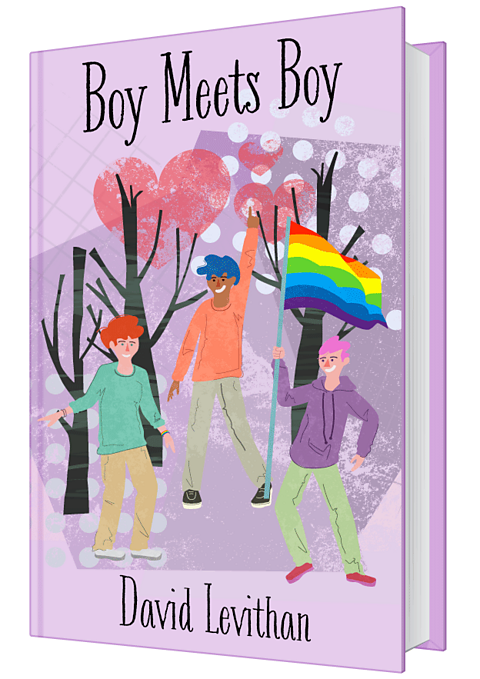
Boy Meets Boy was written by American author David Levithan and published in 2003.
It tells the story of Paul and Noah and is about first love, the power of friendship and the importance of being true to yourself.
Boy Meets Boy is set in a fictional American town where everyone’s individual identity is celebrated.
The novel has a strong message about acceptance and the importance of friendship.

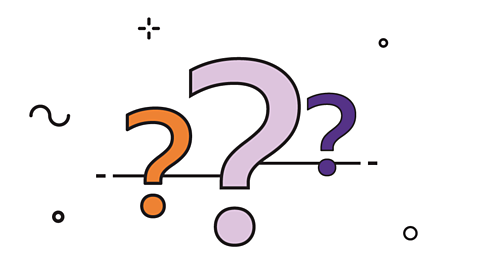
Did you know?
Every year, David Levithan writes a story for his friends for Valentine’s Day.
Boy Meets Boy started as one of these stories.
Video
Watch the video below to learn about the plot, characters and themes in Boy Meets Boy.
"The world loves stupid labels. I wish we got to choose our own."
This is a quote from Boy Meets Boy by David Levithan, a romance novel set in a fictional American town, where all unique identities are welcomed.
The story follows popular teenager Paul's school life, his friendships and his blossoming romance with new boy in town, Noah. When Paul first meets Noah, he falls hard for him. But he soon finds himself caught in a love triangle when his ex-boyfriend Kyle comes to him for support and they end up sharing a kiss.
Paul has always been comfortable and open about his sexuality. This seems to be the same for most of the people he knows. But his friend Tony, who is also gay and lives in a nearby town, is struggling to gain acceptance from his parents. As Paul's relationships get more and more complicated, it isn't long before the whole school is eagerly waiting to see where his affections lie. Does Kyle still have a place in his heart? Will he win Noah back? Or will something something else happen altogether?
Paulis the narrator. He is is fun, well-liked and outgoing as well as being compassionate and caring.
Noah is the new kid in town. He's arty and mysterious. He's been hurt in the past so he's cautious when it comes to new relationships.
Tony is quiet and thoughtful and Paul often turns to him for advice. Tony's parents disapprove of his sexuality. But with the help of his friends he begins to stand up for himself.
This book is set in a fictional American town, where LGBTQ+ people are celebrated. But even here there are still shadows of homophobia.
Romance is a key theme, and friendship is also important in this novel. When other relationships fall apart it is friendship that brings everyone together.
Boy Meets Boy by David Levithan is a story about love, friendship and acceptance. I really feel that everyone will be ableto take something away from this book.

Did you know?
The author has said:
I’m often asked if the book is a work of fantasy or a work of reality, and the answer is right down the middle – it’s about where we’re going, and where we should be.

Plot
Paul, Tony and Joni attend a gig at their local bookstore. Paul meets Noah and they are instantly attracted to each other. They see each other again at the school ≥…»ÀøÏ ÷coming Pride Rally.
After school the next day, Noah invites Paul back to his house. They get on well and start dating.
Kyle, Paul’s ex-boyfriend, apologises to him for treating him badly. He tells Paul that he is having a hard time and is confused about his sexualitySexuality is the word used to describe the sexual feelings we experience towards other people.. Paul feels sorry for Kyle and they kiss.
Paul and his friend Tony go out for a walk. Tony is feeling down. Paul tells him that he values their friendship and they hug. A passer-by sees them and tells Tony’s mother that they are a couple. Tony’s parents are outraged and ban Paul from seeing or speaking to Tony.
Noah hears a rumour that Paul has kissed someone else. He confronts Paul and learns about the kiss with Kyle and hug with Tony. Noah breaks up with him.
Paul is heartbroken and plans to make it up to Noah by organising seven surprises. After the seventh surprise, Noah forgives Paul and asks him if he will be his date to the annual Dowager Dance. Paul accepts.
On the night of the dance, Paul and some friends persuade Tony’s parents to allow him to go to the dance. On the way there, they meet up with lots of friends from school for a pre-dance celebration to show Tony how much they care about him.
Activity
Characters
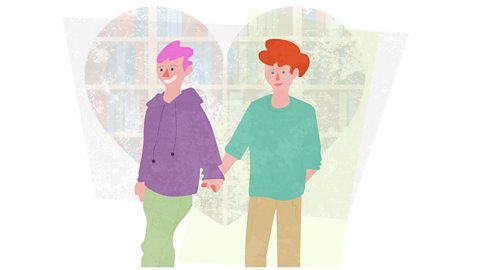
Paul
Paul is confident, values honesty and has lots of friends. He has lived in the same town his whole life and feels settled. Paul is active in school life and is in charge of planning the annual Dowager Dance.
He has known he was gay'Gay' is a word commonly used to mean the same as homosexual. Homosexual means attracted to the same sex. since he was five. His friends and family all accept his sexuality.

Noah
Noah has recently moved to town. He likes painting and photography. Before he moved, he had his heart broken by a boy called Pitt. Because of this, Noah is cautious in his relationships.
Tony
Tony is Paul’s friend. He lives in the neighbouring town and attends a different school. Tony's parents refuse to accept that Tony is gay.
Kyle
Kyle and Paul dated briefly. Kyle is confused about his sexuality but has begun to accept that he is attracted to both girls and boys. However, he is not comfortable with being labelled as bisexualAttracted to both men and women. Some people prefer the term 'pansexual' to indicate that they are attracted to different kinds of people, regardless of sex or gender.. He asks, "Do I really have to find a word for it? Can’t it just be what it is?"
Joni
Joni has been good friends with Paul since they were little. She is straightA word commonly used to describe people who are heterosexual. Heterosexual means attracted to the opposite sex. and has just started dating Chuck. Her relationship with Chuck causes her to grow apart from Paul and Tony.
Infinite Darlene
Infinite Darlene used to be called Daryl Heisenberg but now uses feminine pronounsA pronoun is a word that takes the place of a noun in a sentence, for example, it, he or they. 'She' and 'her' are feminine pronouns.. She is the school’s homecoming queen and also the star player of the football team.

Did you know?
The word sex is used to describe biological differences between people, which affects whether they are registered as a boy or a girl when they are born.
The word gender is used to describe a person’s own sense of whether they feel more masculine or feminine.
Some people don’t identify with the sex they were assigned at birth and use the word transgender to describe themselves.
Some people’s gender identity sits between male and female, whilst others don’t feel male or female in any way. There are a variety of terms that can be used to describe this, such as non-binary.

Activity
Themes
Themes are the main ideas that appear repeatedly in a novel. Some of the important themes in Boy Meets Boy are:
- Friendship
- Sexuality
- Identity
Friendship
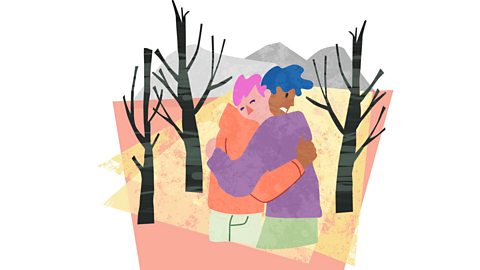
In Boy Meets Boy, Levithan explores the importance of friendship through different characters.
Kyle confuses his friendship with Paul for romance. After kissing Paul, he realises that he needs someone to confide in, not someone to date.
Joni prioritises her new boyfriend Chuck over her old friends. Towards the end of the book she realises that friendships are just as important as relationships.
For Tony, friendship is a source of strength. When discussing the phrase “more than friends” with Paul, Tony says: “More than friends’ makes no sense. Look at us. There’s nothing more than us.”
Paul feels the same and describes his friendship with Tony as “something even more rare, and even more meaningful” than a romance.

Sexuality
Levithan has created an accepting and inclusive society in Boy Meets Boy. Acceptance is woven into the very fabric of the society, for example:
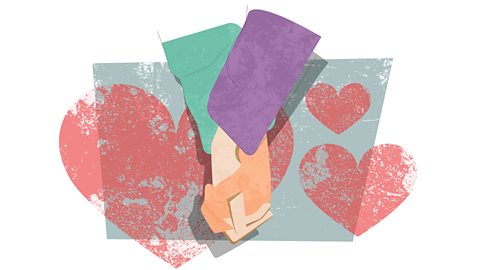
- The community has an active PFLAG (Parents, Family and Friends of Lesbians and Gays) group.
- The school has more members in the gay-straight alliance than in the football team.
- The town has a local Joy Scouts club as an alternative to the Boy Scouts.
- The ≥…»ÀøÏ ÷coming Pride Rally is led by Infinite Darlene wearing a pink ball gown and her football jersey.

The book has a strong and positive message that love is love, regardless of sexuality.
Identity
Paul is secure in his identity. He has a supportive family, a good group of friends and a strong sense of who he is. He knows that he is lucky to feel this way because, at the end of the book, he says:
… in this moment, we are who we want to be. I am lucky, because for me that doesn’t take that much courage. But for others, it takes a world of bravery.
Kyle struggles to find his identity whereas characters like Infinite Darlene are confident in who they are. The characters are happiest and most successful when they can be themselves – whether that comes naturally or not.
How does Tony link to the theme of identity?
Tony isn’t able to express his true identity because his parents don’t accept his sexuality. This makes Tony sad, as he feels like he needs to change or to pretend in order to make his parents happy.
Towards the end of the book, Tony decides that the only way to prove his parents wrong is to be who he is and show them that this isn’t hurting him.
It takes a lot of strength for Tony to be honest, but when he is, Paul says “it feels like rightness winning”.
Language
Writers choose words and phrases carefully when they write. Readers can look closely at texts to think about how and why the writer made these choices.
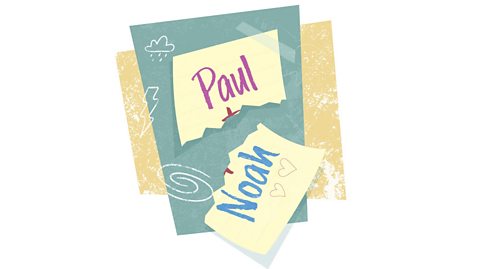
Narrative voice
Boy Meets Boy is narrated by Paul using a first personA first-person narrative is when the story is told from the point of view of one person using the pronoun ‘I’. voice. This means that the reader hears Paul’s point of view and finds out what Paul thinks and feels about the events in the story.
The reader also gets to see the content of notes passed between Paul, Noah and Joni. In this way, the thoughts of other characters are shared in first person too, helping the reader to understand their motivations better.

Nonsense words
Sometimes, usually when Tony is unhappy and finding it difficult to express his feelings, Paul and Tony speak to each other in a made-up language. For example, Paul asks Tony, “Hewipso faqua deef?” and Tony replies “Tinsin rabblemonk tichticker”.
Paul says that he and Tony seem to understand each other through tone and gesture more than through words. These nonsense words suggest how well the boys know and understand each other.
Unusual words
As part of Paul’s plan to show Noah how much he cares, Paul gives Noah a list of “Words to Find and Know in this World”. The list includes some unusual words such as:
- Resplendent – shining brilliantly
- Isochronal – equal or uniform in time
- Dulcet – pleasant to the ear, melodious
Paul’s list shows how unusual things can be beautiful and special.
Structure
Structure refers to how written text is organised – the way the story is ordered and shaped.
Chronological Order
Boy Meets Boy is told in chronological order, which means that the events happen in the order in which they are told.
Paul sometimes tells the reader memories from the past to help the events make sense. For example, he describes:
- The time he first realised that the word ‘gay’ described how he felt
- How he first told Joni that he was gay
These memories are important to Paul’s sense of self-identity.
Titles
Each chapter of Boy Meets Boy has a title which links to a key event or theme in that chapter. For example, the chapter in which Paul first explains the non-existent language that he and Tony use is called “Finding Lost Languages”. These chapter titles point out the important elements of each chapter for the reader.
Activity
Context
LGBTQ+
LGBTQ+ is an acronym for lesbian, gay, bisexual, trans and queer.
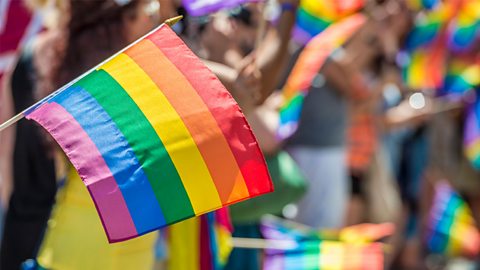
- Lesbian – attracted to people of the same sex. This term refers specifically to women.
- Gay – attracted to people of the same sex. This term is used by both men and women.
- Bisexual – attracted to both men and women. Some people prefer the term 'pansexual' to indicate that they are attracted to different kinds of people, regardless of sex or gender.
- Trans – describes people who feel that their gender is different from the sex recorded at birth.
- Queer – describes anyone who identifies as gay, lesbian, bisexual, transgender or non-binary. The ‘Q’ can also stand for ‘questioning’, to include anyone who is unsure of their gender identity or who they are attracted to.
- The + means that there are lots of other ways that people might choose to identify themselves.

Test your knowledge
Play Bitesize secondary games. gamePlay Bitesize secondary games
Have fun playing science, maths, history, geography and language games.

More on Literature
Find out more by working through a topic
- count6 of 18

- count7 of 18
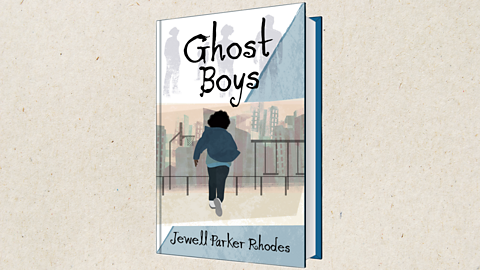
- count8 of 18

- count9 of 18
